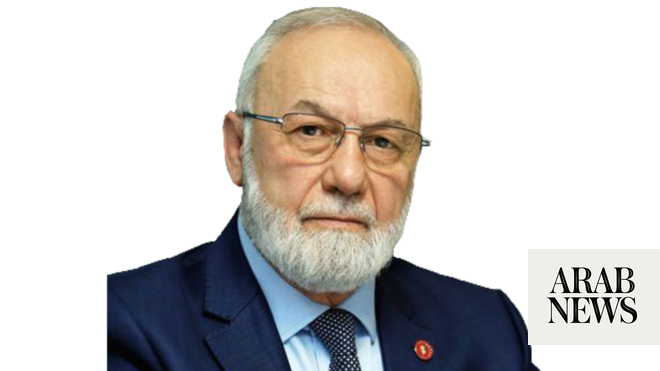Conflict and mass migration in Sudan are causing civilian casualties
DUBAI: Sudanese freelance photographer Faiz Abubakr documented the crisis in his country that began in April 2023, when violence broke out between rival military factions.
The Sudanese Armed Forces, led by Sudan's acting president, Abdel Fattah Al-Burhan, are locked in a battle with the Rapid Support Forces, under the leadership of Mohamed Hamdan Dagalo, known as name Hemedti, ever since.

In this composite photo, Sudanese army chief Abdel Fattah al-Burhan (left frame) attends a graduation ceremony in Gibet near Port Sudan on July 31, 2024, while paramilitary commander Mohamed Hamdan Dagalo is shown in another picture talking to his followers in an undisclosed location on July 28, 2023. (AFP Photo)
Despite the great danger, Abubakr felt compelled to take to the streets with his camera to document the disaster in his hometown of Khartoum and capture the impact of the generals' bitter rivalry on the people. a nation in need.
“Many questions went through my mind about the lives of the villagers who fled every day from the dangers of war, whose houses and belongings were destroyed by fire, and who died in horrible ways,” said Abubakr to Arab News. “These questions are related to how they spent their days under the roar of planes and explosions, which forced them to leave their homes and haunted them with the curse of displacement.”
According to the United Nations, Sudan is in the midst of the world's worst migration crisis, with millions of people forced to flee their homes, including Abubakr who sought refuge in Egypt with his original family.

After a few months, he returned to Sudan to work for several news agencies until he was injured, he said, by an RSF gunman. After he recovered, he and his family moved to Kassala, in eastern Sudan, near the Eritrean border.
Abubakr's clients included AFP, Le Monde, and The New York Times. Before the conflict, he won the World Press Photo Award 2022 in the category “Africa, single”. Now he is just trying to live.
“The situation is worse than before,” Abubakr said. “Life is very difficult due to lack of food and livelihood. There is a threat of famine in all parts of the country.

Even in exile, freelance photographer Faiz Abubakr continues to photograph the conflict around him in Sudan. (Instagram)
Even in exile, Abubakr continued to photograph the conflict around him, particularly its impact on civilians forced to leave their homes.
“I'm trying to record their stories, but it's difficult to take photos for security reasons,” he said. “I lost everything during the war, including most of my photographic equipment. My mood is getting worse.”
INNUMBER
• 10 million People displaced in Sudan, UN says.
• 25 million More than half of the population is in need of humanitarian assistance.
Abubakr is not alone. The conflict has taken its toll on the health and well-being of Sudanese civilians, according to a new report by Medecins Sans Frontieres, whose workers are working in eight states across Sudan.
Residents have faced “horrendous violence, been battered by widespread fighting and survived repeated attacks, exploitation and abuse” by warring parties, the report said.
“Violence in Sudan shows no sign of abating,” Vickie Hawkins, MSF UK's executive director, wrote in the report. “In fact, it is intensifying at a pace that exceeds our ability to coordinate, record and respond to the daily activities that our team and patients in Sudan are experiencing.”
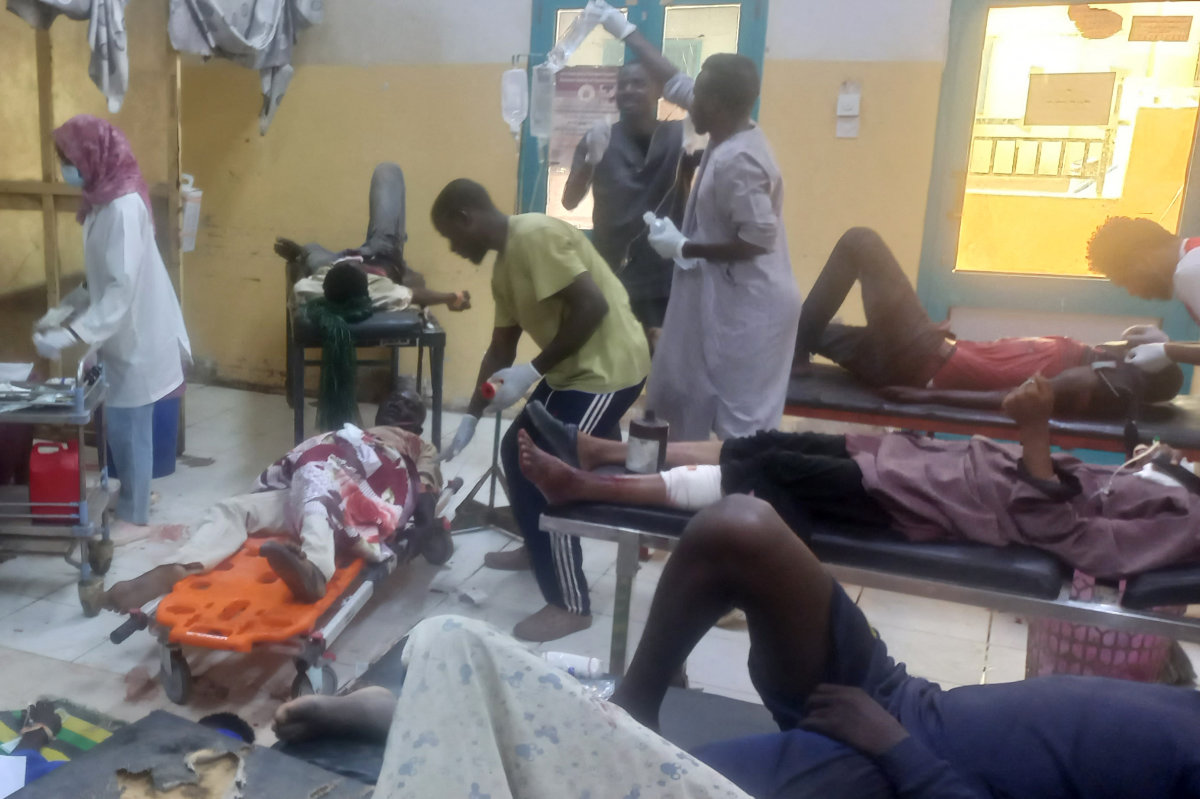
People were treated at Bashair Hospital in the Sudanese capital during the early weeks of the war last year. Many hospitals in Khartoum and other states have been closed due to attacks on health workers. (AFP/File)
The report draws on medical and surgical data collected by MSF from April 15, 2023 to May 15 of this year. It documents the patterns of violence and abuse seen by MSF teams and their devastating impact on public health.
In the report, an unnamed health worker at Al-Nao hospital in Omdurman, west of Khartoum, described the aftermath of recent bombings in a residential area of the city.
“About 20 people came and died immediately. Some arrived already dead,” said the health worker. “Most of them come with their hands or feet already hanging, already severed. Some have only a small piece of skin holding two limbs.
“A patient came in with a broken leg, his carer followed, carrying his missing limb in his hand.”
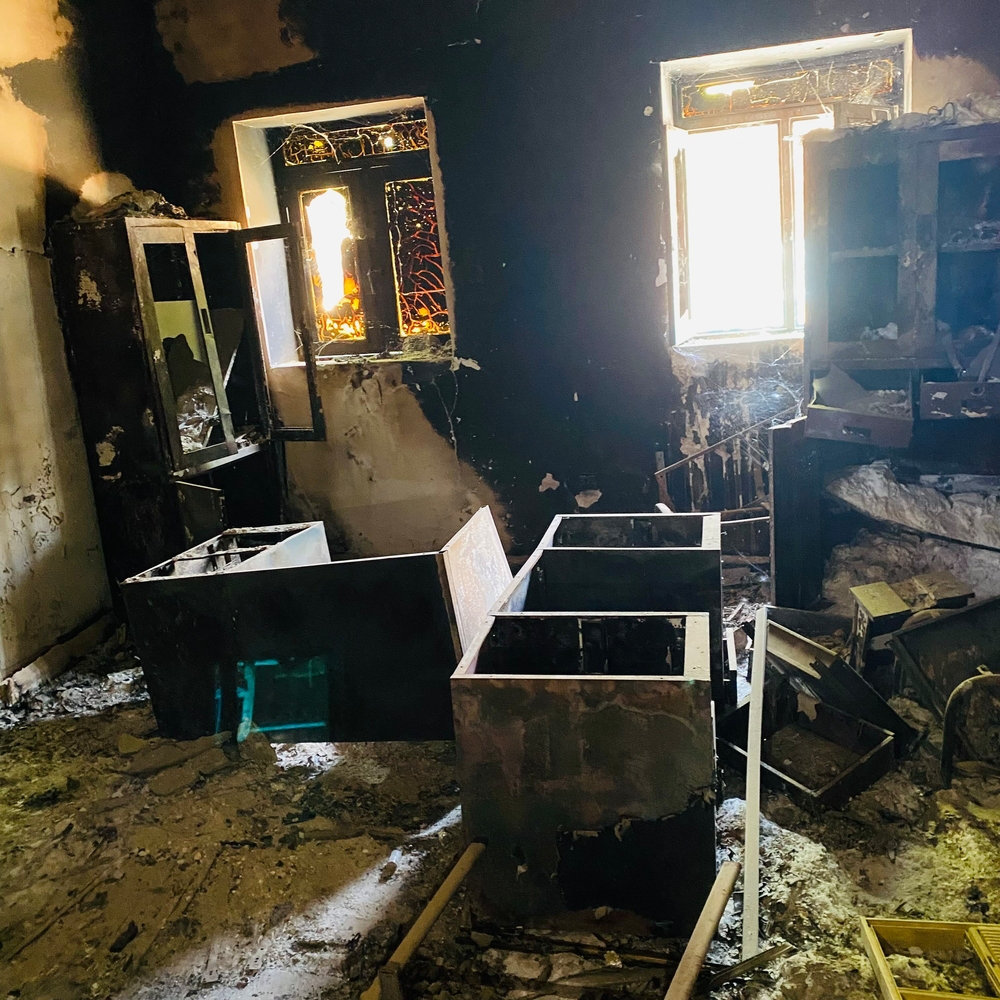
The post-storm destruction and looting of MSF-supported health facilities in Sudan. (MSF)
According to MSF, Al-Nao Hospital treated 6,776 patients for injuries caused by armed violence between August 15, 2023 and April 30 this year – an average of 26 people per day.
“After 15 months of conflict, the warring parties show a complete disregard for the lives of all civilians,” said Kyle McNally, a project coordinator for MSF who recently lived in the town of Nyala in southwest Sudan, according to Arab News.
“They say they represent and fight. Rather, it is a real war with the people of Sudan in the way they handle their enmity. We are seeing rampant violations of civilian security and attacks on civilians as well as civilian infrastructure.
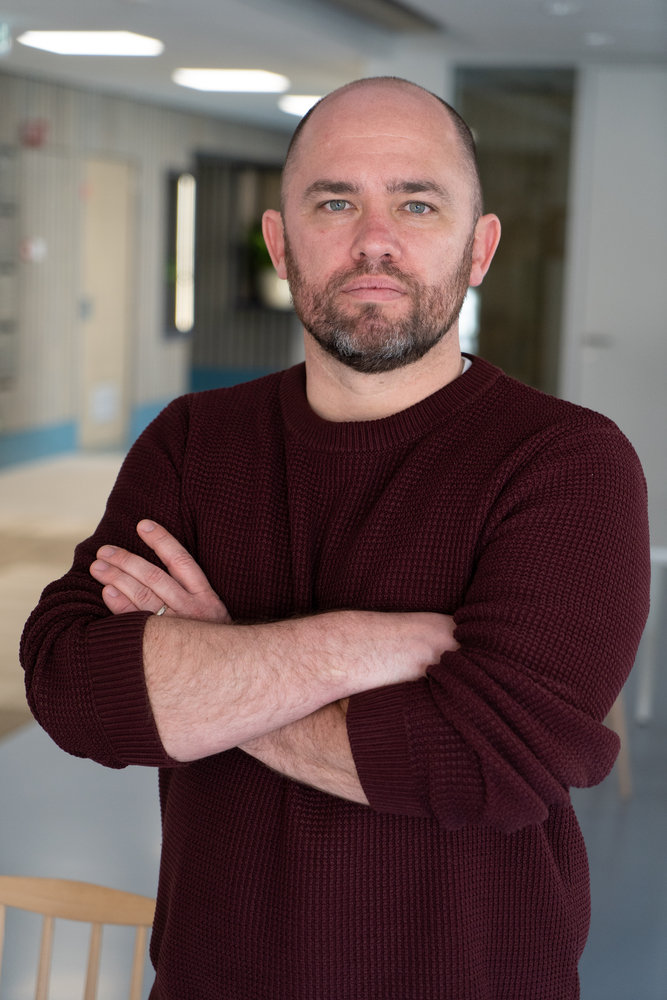
Kyle McNally, project coordinator for Medicins Sans Frontieres. (MSF photo)
“Hospitals and medical staff are not spared. We are seeing a lot of attacks on health facilities. The hospital system and the medical system were completely destroyed by the war. “
According to the United Nations, Sudan is facing a worsening food crisis, with around 25 million people — including more than 14 million children, of whom 3 million are under five years, suffering from severe malnutrition — in dire need of humanitarian aid.
At least 10 million people have been forced to flee their homes to escape violence, according to newly released data from the United Nations' International Organization for Migration.

“The conflict in Sudan has become one of the biggest migration crises in the world,” said Alyona Synenko, spokeswoman for Africa at the International Committee of the Cross. Red, said Arab News from Nairobi.
“We are talking about a quarter of the population who fled their homes. People lost their homes and lost access to the tools they needed to survive. “
The displacement of farmers, in particular, has led to the collapse of Sudan's agricultural sector, further exacerbating food insecurity. “Food production has suffered greatly, and the food crisis is getting worse,” Synenko said.
“We have hundreds of people calling us, desperate, because they don't know what happened to their loved ones. More and more of our families are getting divorced and losing our way of communicating with each other.”
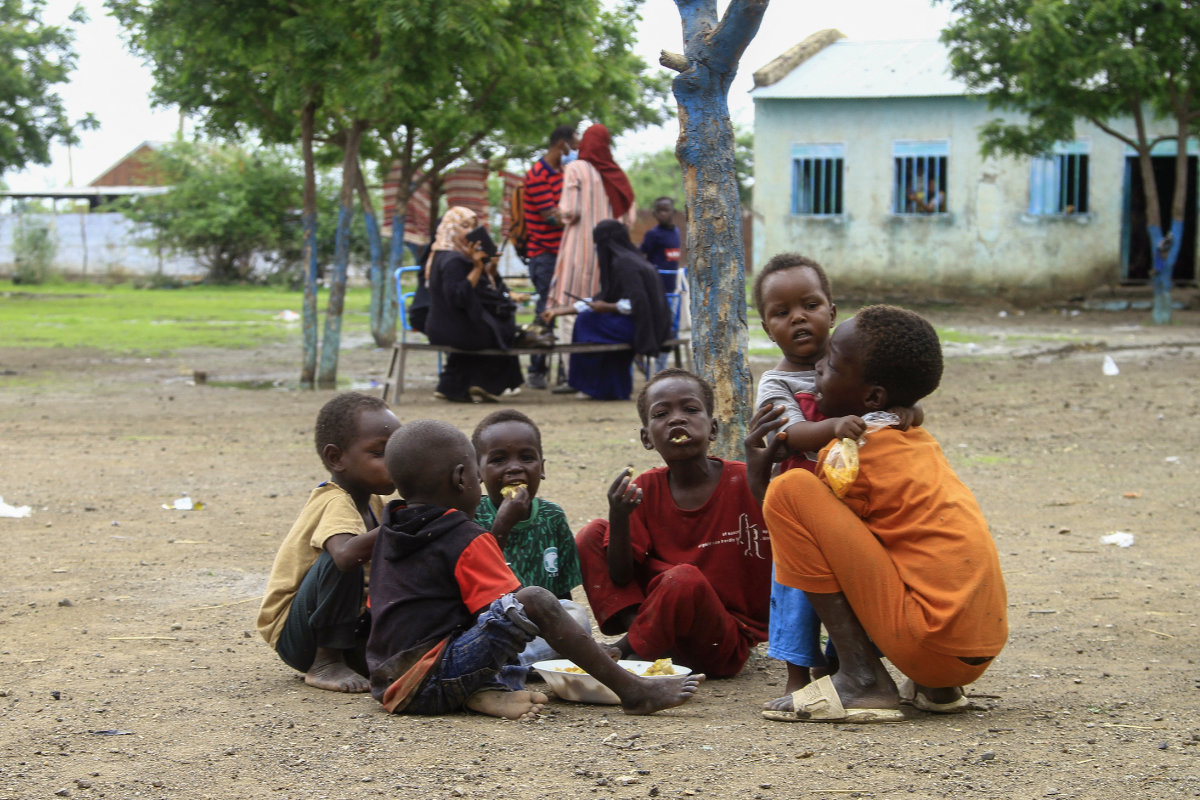
Displaced children distribute food at a charity event in a refugee camp in the city of Gedaref in war-torn eastern Sudan on July 13, 2024. (AFP)
During the first half of 2024, the ICRC partnered with the Sudanese Red Crescent to provide emergency aid and essential services. However, his efforts were frustrated by the security situation, administrative challenges and difficulties in accessing the community.
Nowhere is this more evident than in Sudan's Darfur region, where claims of ethnic cleansing and hospital attacks have emerged.
“We saw complete devastation across the city of Nyala, which used to be the second most populous city in Sudan,” said MSF's McNally.
“Almost the entire northern part of the city was completely destroyed. You see the lack of basic services everywhere. There has been almost no international humanitarian action in this area.
“You really see people in need. You have the remaining population, and then you also have IDP camps in the surrounding areas with hundreds of thousands of people. You see a lot of people who are really desperate and not much help is coming to them right now. “
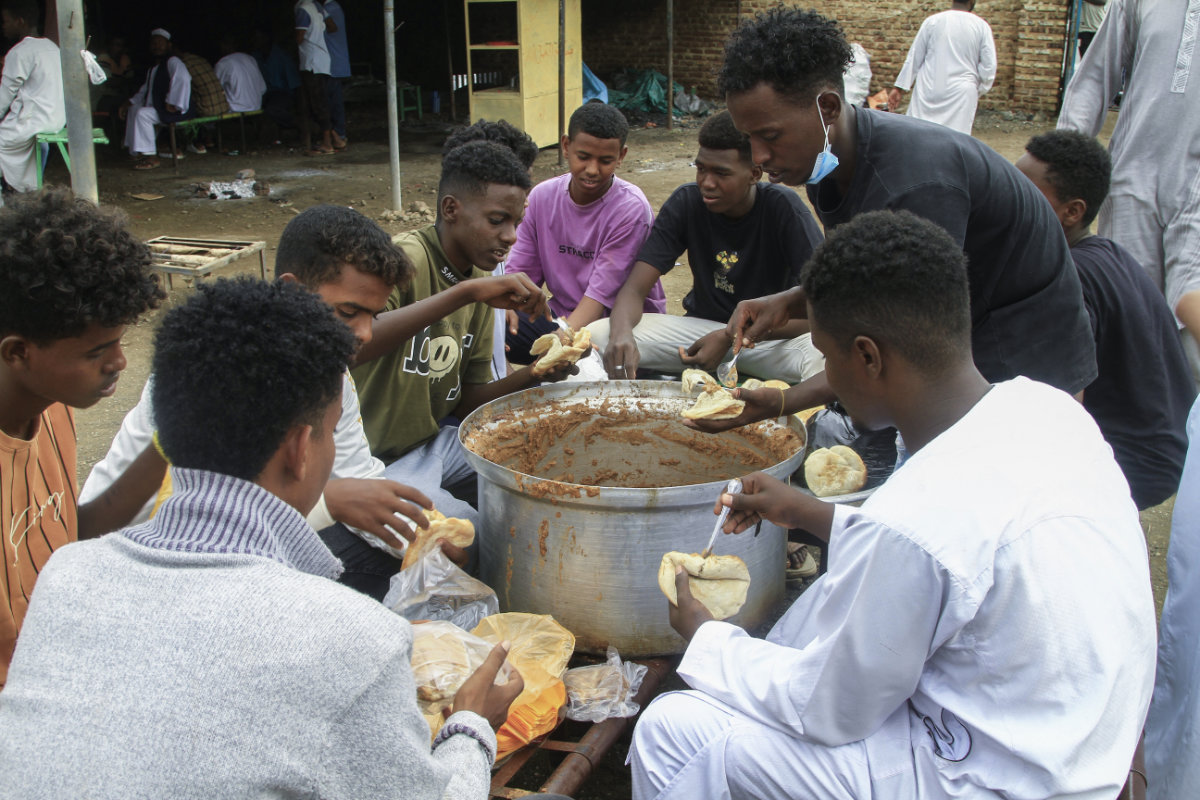
Charity volunteers deliver food at a refugee camp in the war-torn city of Gedaref in eastern Sudan on July 13, 2024. (AFP)
According to Abubakr, Sudanese civilians are suffering greatly in areas controlled by the Rapid Support Force. The military group now controls most of Khartoum, Al-Jazirah, Kordofan, and much of western Darfur.
Of particular concern are reports of sexual and gender-based violence emerging across the country, particularly from Darfur.
An MSF survey of 135 survivors of sexual violence, conducted by MSF teams in refugee camps in Chad between July and December 2023, was found that 90 percent were abused by armed perpetrators. 50 percent were domestically assaulted and 40 percent were assaulted by multiple assailants.
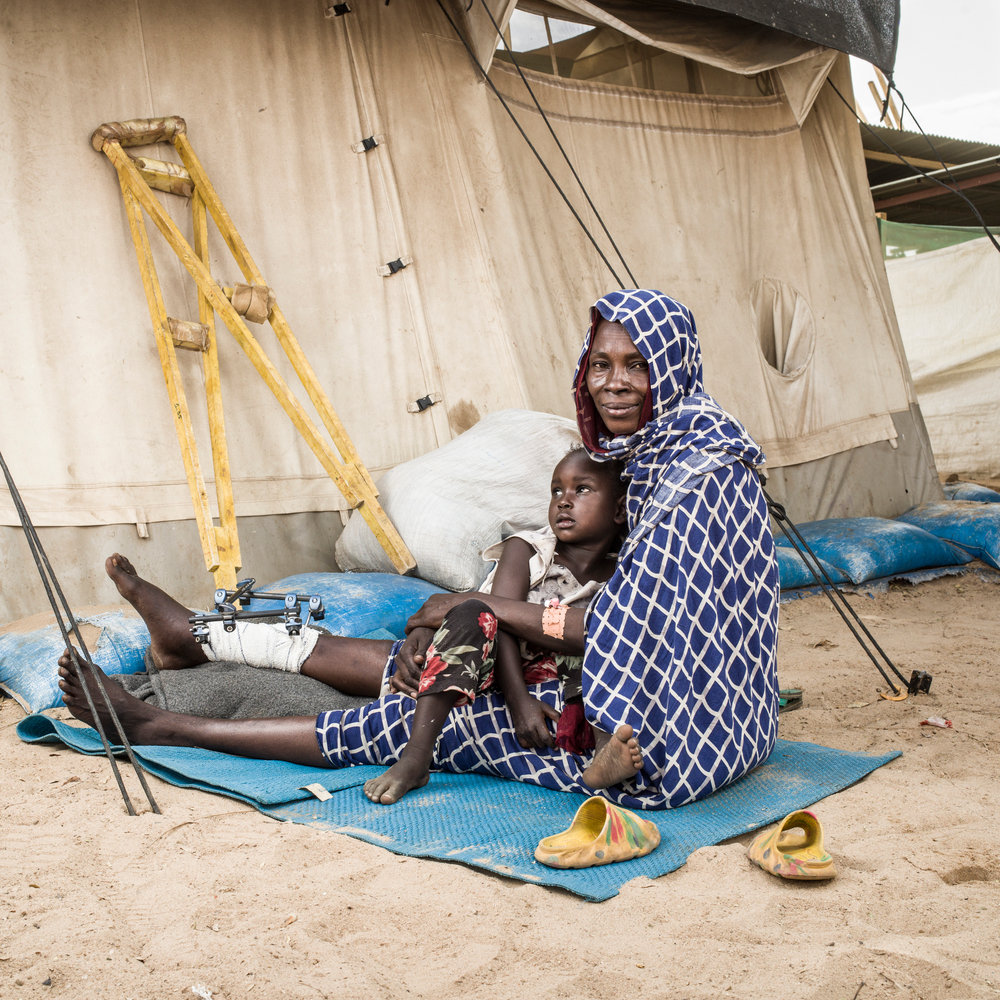
The conflict left tens of thousands of people disabled. (Corentin Fohlen/Divergence
Abubakr remembers the distress of seeing his neighbors in Khartoum leave their homes — leaving places and possessions where no one knew who they were, not knowing if they would ever return. He never believed that he would also run away from his hometown.
Now, all that's left are memories and pictures of a home he hopes to one day restore.
“I saw that no one lives in that place like he does,” said Aboubakr. “The pictures and scenes in my house never left my mind. I want to get back to it.”

